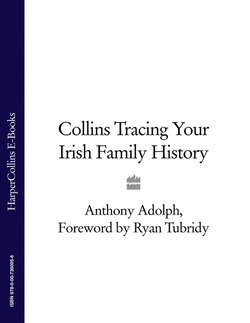Читать книгу Collins Tracing Your Irish Family History - Ryan Tubridy, Anthony Adolph - Страница 39
CHAPTER 3 England and Wales
ОглавлениеIrish migration into England and Wales was fairly negligible until the 19th century, when many Irish Catholic labourers, called spailpíns (or ‘spalpeens’ in English), flocked to mainland Britain to find work, to benefit from the Poor Law, or simply to avoid famine.
The 1841 census records 60,000 Irish living on the mainland. Few wanted to stay permanently – many who came to Liverpool, for example, hoped to earn enough to pay for the passage to America. When they remained, it was often accidental, not planned. Many came seasonally, and within living memory Irish people would walk from the ferry at Holyhead, Wales, to wherever they could find summer work, culminating in hop-picking in Kent, only to return with their wages to their families in Ireland. Many others came with their families, especially to settle in the industrial towns. Such migration often followed distinct patterns, i.e.:
Yorkshire – many from Leinster and Connacht
Bradford – mainly Dublin, Laois, Mayo and Sligo
Leeds – mainly Mayo, Tipperary and Dublin
Stafford – 40 per cent from the Castlerea area of Co. Roscommon
The Great Famine brought in vast numbers, sailing to Liverpool, Swansea, Newport and Cardiff. Some 80,000 came in 1847 alone. The 1861 census shows a third of Cardiff’s population was Irish. In Liverpool, where 300,000 people arrived in a mere six months, food was distributed from workhouse to 23,866 people a day. It was from Irish slums there that the typhus epidemic is thought to have started. After the Famine subsided, migration continued erratically: during World War II and in the 1950s, when demand for manual labour was high, more Irish migrated to mainland Britain than to America.
